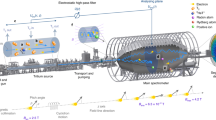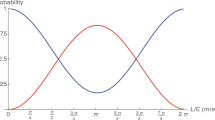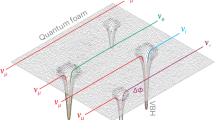Abstract
THERE is at least one lepton in addition to the electron and muon and this might have an associated neutrino. If such a neutrino is stable, its existence implies that the amount of helium produced in the early stages of the expanding Universe is higher than is generally believed. If there are several heavy leptons with stable neutrinos, the helium production may become so high that it is in clear contradiction with observations. It is pointed out here that, even if these neutrinos exist, they may not be stable and that there is no clear evidence that even the muon neutrino is stable. If the additional neutrinos are unstable with a short enough half life, they do not affect the cosmological helium production and it is reduced if the muon neutrino is unstable.
This is a preview of subscription content, access via your institution
Access options
Subscribe to this journal
Receive 51 print issues and online access
$199.00 per year
only $3.90 per issue
Buy this article
- Purchase on Springer Link
- Instant access to full article PDF
Prices may be subject to local taxes which are calculated during checkout
Similar content being viewed by others
References
Penzias, A. A. & Wilson, R. W. Astrophys. J. 142, 419–421 (1965).
Hoyle, F. & Tayler, R. J. Nature 203, 1103–1110 (1964).
Peebles, P. J. E. Physical Cosmology (Princeton University Press, 1971).
Hundhausen, A. J. Coronal Expansion and Solar Wind (Springer, Berlin 1972).
Perl, M. L. et al. Phys. Rev. Lett. 35, 1489–1492 (1975).
Perl, M. L. et al. Phys. Lett. 63B, 466–470 (1976).
Ali, A. & Yang, T. C. Phys. Rev. D14, 3052–3058 (1976).
Miller, D. J. Nature 272, 205 (1978).
Greenstein, G. S. Astrophys. Space Sci. 155–165 (1968).
Tayler, R. J. Nature 217, 433 (1968).
Wagoner, R. V., Fowler, W. A. & Hoyle, F. Astrophys. J. 148, 3–49 (1967).
Hawking, S. W. & Tayler, R. J. Nature 209, 1278–1279 (1966).
Thorne, K. S. Astrophys. J. 148, 51–68 (1967).
Feynman, R. P. & Gell-Mann, M. Phys. Rev. 109, 193–198 (1958).
Weinberg, S. Phys. Rev. Lett. 19, 1264–1266 (1967).
Salam, A. in Elementary Particle Physics (ed. N. Svartholm) (Almquist and Wiksells, Stockholm, 1968).
Author information
Authors and Affiliations
Rights and permissions
About this article
Cite this article
TAYLER, R. Neutrino stability and cosmological helium production. Nature 274, 232–234 (1978). https://doi.org/10.1038/274232a0
Received:
Accepted:
Published:
Issue Date:
DOI: https://doi.org/10.1038/274232a0
Comments
By submitting a comment you agree to abide by our Terms and Community Guidelines. If you find something abusive or that does not comply with our terms or guidelines please flag it as inappropriate.



